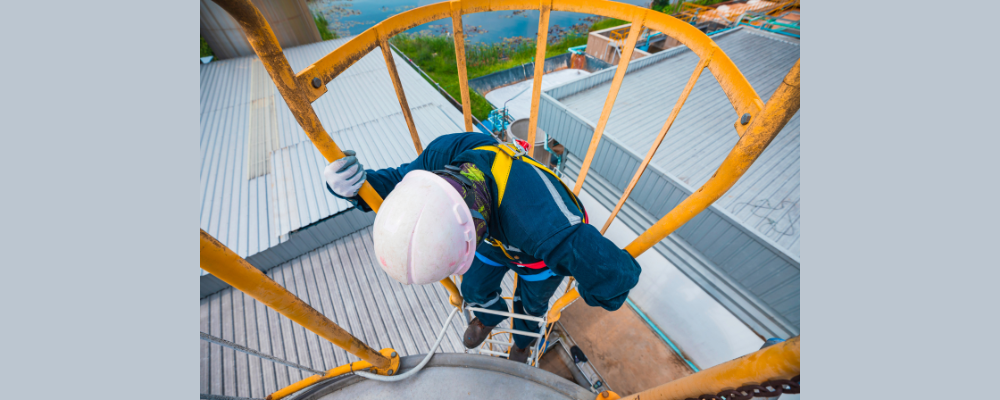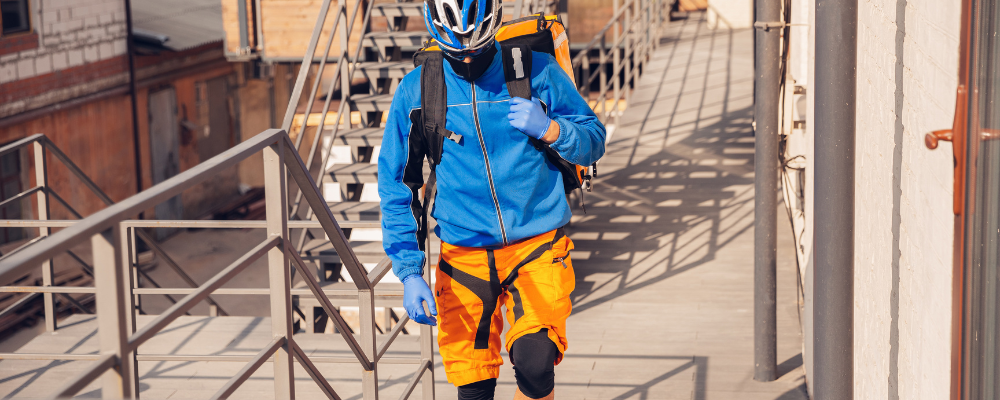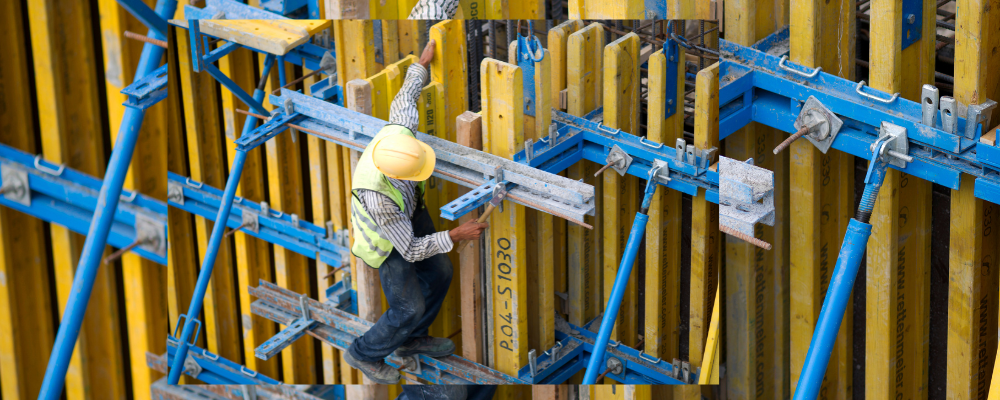Introduction
In the contemporary landscape of workplace safety, implementing robust fall prevention techniques emerges as a foundational pillar for ensuring the welfare of employees. As an employer or safety manager, safeguarding workers from potential hazards cannot be overstated. Among the myriad risks that workers face, falls constitute one of the most prevalent and severe threats. Therefore, adopting effective fall prevention measures is not just a matter of compliance but an imperative for promoting a culture of safety and well-being within the organization.
At Site and Safety Solutions, we recognize the paramount importance of prioritizing safety above all else. With a commitment to excellence, we offer a diverse range of high-quality products meticulously designed to mitigate fall risks across various industries. In this detailed note, we explore the significance of fall prevention techniques, elucidating their pivotal role in protecting workers and enhancing workplace safety.
I. Understanding the Significance of Fall Prevention:
A. Statistics on Fall-Related Injuries:
- The prevalence of Fall Prevention Techniques in occupational settings underscores the critical need for proactive preventive measures.
- According to data from occupational safety agencies such as OSHA (Occupational Safety and Health Administration) and CDC (Centers for Disease Control and Prevention), falls consistently rank among the leading causes of workplace fatalities and injuries.
- Statistics reveal alarming figures regarding the frequency and severity of falls, highlighting the urgent necessity for comprehensive fall prevention strategies.
B. Impact on Worker Morale and Productivity:
- Beyond physical harm, Fall Prevention Techniques can profoundly affect worker morale and productivity.
- Employees who feel unsafe or perceive inadequate safety measures are likely to experience heightened stress and anxiety, adversely affecting their job satisfaction and overall well-being.
- Workplace accidents, including falls, often result in absenteeism, decreased productivity, and increased turnover rates, which can have significant financial implications for employers.
C. Legal and Financial Implications for Employers:
- Failure to prioritize Fall Prevention Techniques can expose employers to substantial legal liabilities and financial burdens.
- Regulatory agencies such as OSHA impose stringent requirements for workplace safety, including fall protection standards and non-compliance with them, which can result in hefty fines and penalties.
- Moreover, litigation arising from workplace injuries, including falls, can lead to costly settlements, damage to reputation, and loss of trust among employees and stakeholders.

II. Essential Components of Fall Prevention Techniques:
A. Risk Assessment and Hazard Identification:
- The foundation of any effective Fall Prevention Techniques program lies in conducting comprehensive risk assessments and identifying potential hazards.
- Employers can proactively identify fall hazards by systematically evaluating workplace environments, tasks, and equipment and implementing targeted preventive measures.
B. Hierarchy of Controls:
- Employers can prioritize and implement measures to eliminate or mitigate fall risks by adhering to the hierarchy of controls framework.
- This hierarchical approach encompasses various strategies, including engineering controls (e.g., guardrails, safety nets), administrative controls (e.g., signage, work procedures), and personal protective equipment (e.g., harnesses, lanyards).
C. Training and Education:
- Proper training and education are indispensable components of an effective Fall Prevention Techniques program.
- Equipping employees with the knowledge and skills necessary to recognize hazards, use safety equipment correctly, and adhere to established protocols fosters a safety-conscious culture and reduces the likelihood of falls.
D. Proper Equipment Selection and Usage:
- Selecting and utilizing appropriate Fall Prevention Techniques and equipment is crucial for mitigating risks and ensuring worker safety.
- Employers must invest in high-quality, properly maintained equipment tailored to their work environment’s needs and conditions.
- Furthermore, adequate equipment usage and maintenance training are essential to maximize effectiveness and minimize the risk of accidents.
Understanding the significance of fall prevention techniques is pivotal for promoting workplace safety and protecting workers from harm. By addressing the statistics, implications, and essential components outlined in this note, employers can proactively mitigate fall risks and cultivate a safety culture within their organizations. At Site and Safety Solutions, we remain steadfast in our commitment to providing innovative products and comprehensive solutions to safeguard workers and enhance workplace well-being.
III. Exploring Site and Safety Solutions’ Fall Protection Products:
A. 3-STRAND POLY DACRON COMBO ROPE FALL PROTECTION:
The 3-STRAND POLY DACRON COMBO ROPE FALL PROTECTION offered by Site and Safety Solutions is a reliable and versatile tool for preventing falls in various work environments. This rope is constructed from high-quality polyhedron material, known for its durability and strength, making it suitable for multiple applications. Combining three strands ensures enhanced stability and load-bearing capacity, which are crucial factors in fall protection scenarios.
Key Features:
- High-Quality Poly Dacron Material: Ensures durability and longevity, even in challenging work conditions.
- Versatile Application: Suitable for construction, maintenance, and other industries where fall protection is necessary.
- Enhanced Stability: The three-strand design provides added stability and reliability during use.
- Compatibility: Compatible with various anchorage systems and harnesses for seamless integration into existing safety setups.
B. ANCHOR CABLE CROSS ARM – 6 FT:
The ANCHOR CABLE CROSS ARM – 6 FT is an essential component of Fall Prevention Techniques, providing a secure anchorage point for workers at height. Designed to be mounted horizontally on structures such as beams or poles, this cross arm ensures stability and reliability when used in conjunction with fall arrest systems. Constructed from durable materials and engineered for maximum strength, it offers peace of mind in high-risk work environments.
Key Features:
- Horizontal Mounting: Allows easy installation on beams, poles, or other structural elements.
- Robust Construction: Made from high-strength materials to withstand heavy loads and harsh environmental conditions.
- Secure Anchorage: Provides a stable connection point for fall arrest systems, ensuring worker safety at height.
- Versatile Compatibility: Compatible with a range of fall protection equipment, including lifelines, lanyards, and harnesses.
C. Full Body Harness: Universal, 1D, MB Chest, FD, TB Legs:
The Full-Body Harness offered by Site and Safety Solutions is designed to provide comprehensive protection for workers at height. This harness ensures comfort, mobility, and safety during prolonged use with a universal fit and multiple adjustment points. Equipped with features such as dorsal and sternal attachment points, it allows for a secure connection to fall arrest systems, minimizing the risk of injury in the event of a fall.
Key Features:
- Universal Fit: Adjustable straps and buckles accommodate many body types and sizes.
- Enhanced Comfort: Padded shoulder and leg straps reduce pressure points and fatigue during extended wear.
- Multiple Attachment Points: Dorsal and sternal D-rings provide secure connections for lifelines, lanyards, and other fall protection equipment.
- Quick-Connect Buckles: Allows easy and efficient donning and doffing, enhancing worker productivity and convenience.
D. Honeywell Miller® TurboLite™ Flash Personal Fall Limiter:
The Honeywell Miller® TurboLite™ Flash Personal Fall Limiter is a compact and lightweight device designed to arrest falls quickly and effectively. Featuring an integrated shock absorber and high-strength nylon webbing, it provides reliable Fall Prevention Techniques while minimizing the user’s fall forces. Its retractable design and built-in swivel offer freedom of movement and flexibility, which is ideal for work in confined spaces or tight quarters.
Key Features:
- Compact and Lightweight: Easy to carry and maneuver, reducing user fatigue and increasing productivity.
- Retractable Design: Retracts and extends smoothly, providing ample working space without excess slack.
- Integrated Shock Absorber: Reduces fall forces to safe levels, minimizing the risk of injury to the user.
- Built-in Swivel: Allows unrestricted movement and rotation, enhancing user comfort and mobility.
E. Steel Plate Flange Anchor, Reusable: 310 lb Wt Capacity, Fixed D-Ring, Vertical, Steel, 3M DBI-SALA:
The Steel Plate Flange Anchor offered by Site and Safety Solutions is a durable and reusable anchorage point for fall protection systems. Designed for vertical mounting on steel structures such as I-beams or columns, this anchor provides a secure connection for lifelines, lanyards, and other fall arrest equipment. Its high weight capacity and corrosion-resistant construction offer long-term reliability in demanding work environments.
Key Features:
- High Weight Capacity: Rated for loads up to 310 pounds, ensuring safe use for various applications.
- Corrosion-Resistant Construction: Made from high-strength steel for durability and longevity, even in harsh conditions.
- Fixed D-Ring: Provides a stable attachment point for connecting fall protection devices, minimizing movement and sway.
- Reusable Design: Can be installed and removed multiple times without compromising safety or performance.

IV. Best Practices for Implementing Fall Prevention Techniques:
A. Conducting Regular Safety Audits:
Regular safety audits are crucial for identifying potential hazards and evaluating the efficacy of existing Fall Prevention Techniques. Through thorough workplace inspections, including equipment, procedures, and employee behavior, employers can proactively address safety concerns and implement corrective actions as necessary.
B. Establishing Clear Safety Policies and Procedures:
Clear and concise safety policies and procedures play a pivotal role in fostering a culture of safety in the workplace. By clearly outlining expectations, responsibilities, and consequences related to Fall Prevention Techniques, employers ensure that employees understand their role in maintaining a safe work environment. Regular training and communication further reinforce these policies, promoting compliance among staff.
C. Encouraging Worker Engagement and Participation:
Employees are often the frontline defense against fall-related accidents, possessing valuable insights into the specific risks present in their work environment. Employers can leverage their expertise to identify hazards and develop practical solutions by actively involving workers in developing and implementing fall prevention strategies. Encouraging open communication and providing avenues for feedback empower workers to take ownership of their safety, contributing to a culture of continuous improvement.
D. Continuous Improvement and Adaptation to Industry Standards:
Fall Prevention Techniques is dynamic, with new technologies, regulations, and best practices emerging regularly. Employers must stay abreast of these developments and be willing to adapt their strategies accordingly. Investing in ongoing training, equipment upgrades, and process improvements ensures that fall prevention efforts remain effective and compliant with industry standards.
V. Case Studies: Real-World Applications of Fall Prevention Strategies:
A. Construction Industry:
Construction case studies highlight the importance of proper fall protection measures, particularly in high-risk activities such as roofing and scaffolding. Through comprehensive strategies, including harnesses, lifelines, and anchor points, construction companies can significantly reduce falls, enhancing worker safety.
B. Manufacturing Sector:
Falls may occur during routine maintenance or material handling tasks in manufacturing facilities. Case studies underscore the effectiveness of safety measures like machine guarding and ergonomic design in preventing falls and creating safer work environments.
C. Healthcare Facilities:
Healthcare workers face unique fall hazards, such as wet floors and patient-handling tasks. Case studies emphasize preventive measures like clear pathways and staff training to mitigate falls and ensure the safety of both patients and employees.
By implementing these best practices and learning from real-world case studies, employers can effectively mitigate Fall Prevention Techniques and create safer workplaces for their employees.
VI. Compliance with Regulations and Standards
A. OSHA Requirements:
Ensuring compliance with Occupational Safety and Health Administration (OSHA) regulations is essential for any organization. OSHA mandates specific fall protection measures to mitigate workplace hazards. Our products and services are designed to align with OSHA requirements, guaranteeing that your workplace meets or exceeds these standards to protect your employees and avoid potential fines or penalties.
B. ANSI Standards:
The American National Standards Institute (ANSI) establishes fall protection equipment and practices industry standards. Adhering to ANSI standards ensures that your fall prevention measures align with best practices and industry benchmarks. Our products are ANSI-certified, providing you with the assurance of quality and compliance with these rigorous standards.
C. Industry-Specific Regulations:
Different industries may have unique regulations and standards concerning Fall Prevention Techniques. Our team stays abreast of industry-specific regulations to tailor our solutions to your needs. Whether you operate in construction, manufacturing, healthcare, or any other sector, we ensure that our products and services meet the specific requirements of your industry, helping you maintain regulatory compliance and enhance workplace safety.
VII. Training and Resources for Fall Prevention
A. On-Site Training Programs:
Education is critical to effective fall prevention. We offer comprehensive on-site training programs tailored to your organization’s needs. Our experienced instructors provide hands-on training in equipment usage, hazard identification, and safe work practices, empowering your employees to work confidently and safely at heights.
B. Educational Materials and Webinars:
In addition to on-site training, we offer educational materials and webinars covering various aspects of Fall Prevention Techniques. These resources serve as valuable tools for ongoing education and reinforcement of safety protocols. Whether it’s instructional videos, safety manuals, or live webinars, we provide accessible resources to support your commitment to safety excellence.
C. Access to Safety Consultants and Experts:
Our team includes seasoned safety consultants and experts available to guide and support you as you navigate Fall Prevention Techniques. Whether you need assistance with risk assessments, safety audits, or regulatory compliance, our consultants offer valuable insights and recommendations to optimize your fall prevention strategies.
For more information, visit our website and Facebook page.
3-STRAND POLY DACRON COMBO ROPE FALL PROTECTION
Full Body Harness: Universal, 1D, MB Chest, FD, TB Legs
Honeywell Miller® TurboLite™ Flash Personal Fall Limiter
Conclusion
In conclusion, prioritizing fall prevention techniques not only ensures compliance with regulatory standards but also fosters a culture of safety within the workplace. At Site and Safety Solutions, we are committed to providing comprehensive fall protection solutions that empower employers and protect workers from preventable injuries. By implementing the strategies outlined in this guide and utilizing our range of high-quality products, you can significantly reduce the risk of falls and create a safer work environment for all using Fall Prevention Techniques.










